 Web Front-end
Web Front-end JS Tutorial
JS Tutorial Detailed tutorial on using Vue to develop dynamic refresh Echarts components
Detailed tutorial on using Vue to develop dynamic refresh Echarts componentsThis article mainly introduces the detailed tutorial of using Vue to develop dynamically refreshing Echarts components. Friends who need it can refer to the following
Requirement background: Dashboard is the "face" of the current enterprise's back-end products, how to be more real-time Efficient and cool display of statistical data is a question worthy of consideration by front-end development engineers and UI designers. Today, we will start from scratch, encapsulating an Echarts line chart component that dynamically renders data, and start thinking about more interesting components together.
Preparation work
Project structure construction
Due to production needs (actually laziness), Therefore, this tutorial uses ==vue-cli== to build the infrastructure of the project.
npm install -g vue-cli vue init webpack vue-charts cd vue-charts npm run dev
Install Echarts
Use npm to install directly.
npm install Echarts --save
Introducing Echarts
//在main.js加入下面两行代码 import echarts from 'echarts' Vue.prototype.$echarts = echarts //将echarts注册成Vue的全局属性
At this point, the preparation work has been completed.
Static Component Development
Because I was deeply poisoned by the article "React Programming Thoughts", the author is also accustomed to gradually iterating from basic to advanced when developing components.
The purpose of the static component is very simple, which is to render the Echarts chart onto the page.
Create a new Chart.vue file
<template>
<p :id="id" :style="style"></p>
</template>
<script>
export default {
name: "Chart",
data() {
return {
//echarts实例
chart: ""
};
},
props: {
//父组件需要传递的参数:id,width,height,option
id: {
type: String
},
width: {
type: String,
default: "100%"
},
height: {
type: String,
default: "300px"
},
option: {
type: Object,
//Object类型的prop值一定要用函数return出来,不然会报错。原理和data是一样的,
//使用闭包保证一个vue实例拥有自己的一份props
default() {
return {
title: {
text: "vue-Echarts"
},
legend: {
data: ["销量"]
},
xAxis: {
data: ["衬衫", "羊毛衫", "雪纺衫", "裤子", "高跟鞋", "袜子","tuoxie"]
},
series: [
{
name: "销量",
type: "line",
data: [5, 20, 36, 10, 10, 70]
}
]
};
}
}
},
computed: {
style() {
return {
height: this.height,
width: this.width
};
}
},
mounted() {
this.init();
},
methods: {
init() {
this.chart = this.$echarts.init(document.getElementById(this.id));
this.chart.setOption(this.option);
}
}
};
</script>
The above file realizes rendering a simple line chart to the page Components, how about they are very simple? The simplest method to use is as follows:
App.vue
<template>
<p id="app">
<Chart id="test"/>
</p>
</template>
<script>
import Chart from "./components/Chart";
export default {
name: "App",
data() {},
components: {
Chart
}
}
</script>
At this point, when you run the program you should see the following Effect:

First iteration
Now that we have a basic version, let’s take a look at what to do It's still not satisfactory:
The chart cannot be automatically scaled according to the window size. Although the width is set to 100%, the chart will not be re-rendered until the page is refreshed, which will cause The user experience becomes poor.
Charts are currently unable to automatically refresh data
Let’s implement these two points:
Auto scaling
Echarts itself does not support automatic scaling, but Echarts provides us with the resize method.
//在init方法中加入下面这行代码
window.addEventListener("resize", this.chart.resize);
With just this sentence, we have realized the need for the chart to adapt to the window size.
Support automatic data refresh
Because Echarts is data-driven, which means that as long as we reset the data, the chart will follow Re-rendering is the basis for realizing this requirement. Let's imagine again that if you want to support automatic refresh of data, you must have a listener that can monitor data changes in real time and then tell Echarts to reset the data. Fortunately, Vue provides us with the ==watcher== function, through which we can easily implement the above functions:
//在Chart.vue中加入watch
watch: {
//观察option的变化
option: {
handler(newVal, oldVal) {
if (this.chart) {
if (newVal) {
this.chart.setOption(newVal);
} else {
this.chart.setOption(oldVal);
}
} else {
this.init();
}
},
deep: true //对象内部属性的监听,关键。
}
}
The above code implements our monitoring of property changes in the option object. Once the data in the option changes, the chart will be re-rendered.
Achieve dynamic refresh
The next step, I think everyone knows, is to regularly pull data from the background, and then update the option of the parent component Just fine. There are two questions that need to be considered here:
If the chart requires adding one data per second, how should the data request be performed to achieve a balance between performance and user experience?
Should the code for dynamically updating data be placed in the parent component or the child component?
Regarding the first question, obtaining the server data in real time every second is definitely the most accurate. There are two solutions:
Request to the background once per second
Maintain a long connection, and the background pushes data to the front end once per second
One solution undoubtedly causes a great waste of performance and resources; unless the real-time requirements are particularly high (stock system), this method is not recommended;
The second solution requires the use of web Socket, but in Additional development work is required on the server side.
Based on the actual needs of the project (the real-time requirements are not high, and the data generated in the background also has a certain delay), the author adopted the following solution:
The front-end every other Data is requested from the background once a minute, and it is the data of the previous minute of the current time;
The front end will set the above data to the chart every second.
关于第二个问题:笔者更倾向于将Chart组件设计成纯组件,即只接收父组件传递的数据进行变化,不在内部进行复杂操作;这也符合目前前端MVVM框架的最佳实践;而且若将数据传递到Chart组件内部再进行处理,一是遇到不需要动态渲染的需求还需要对组件进行额外处理,二是要在Chart内部做ajax操作,这样就导致Chart完全没有了可复用性。
接下来我们修改App.vue
<template>
<p id="app">
<Chart id="test" :option="option"/>
</p>
</template>
<script>
import vueEcharts from "./components/vueEcharts";
export default {
name: "App",
data() {
return {
//笔者使用了mock数据代表从服务器获取的数据
chartData: {
xData: ["衬衫", "羊毛衫", "雪纺衫", "裤子", "高跟鞋", "袜子"],
sData: [5, 20, 36, 10, 10, 70]
}
};
},
components: {
Chart
},
mounted() {
this.refreshData();
},
methods: {
//添加refreshData方法进行自动设置数据
refreshData() {
//横轴数据
let xData = this.chartData.xData,
//系列值
sData = this.chartData.sData;
for (let i = 0; i < xData.length; i++) {
//此处使用let是关键,也可以使用闭包。原理不再赘述
setTimeout(() => {
this.option.xAxis.data.push(xData[i]);
this.option.series[0].data.push(sData[i]);
}, 1000*i)//此处要理解为什么是1000*i
}
}
}
};
</script>
至此我们就实现了图表动态数据加载,效果如下图:

总结
这篇教程通过一个动态图表的开发,传递了以下信息:
Echarts如何与Vue结合使用
Vue组件开发、纯组件与“脏”组件的区别
Vue watch的用法
let的特性
JavaScript EventLoop特性
...
大家可以根据这个列表查漏补缺。
后续优化
这个组件还有需要需要优化的点,比如:
间隔时间应该可配置
每分钟从后台获取数据,那么图表展示的数据将会越来越多,越来越密集,浏览器负担越来越大,直到崩溃
没有设置暂停图表刷新的按钮
...
上面是我整理给大家的,希望今后会对大家有帮助。
相关文章:
The above is the detailed content of Detailed tutorial on using Vue to develop dynamic refresh Echarts components. For more information, please follow other related articles on the PHP Chinese website!
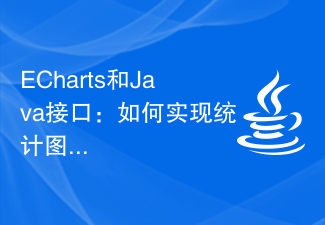 ECharts和Java接口:如何实现统计图表数据导出与分享Dec 17, 2023 am 08:44 AM
ECharts和Java接口:如何实现统计图表数据导出与分享Dec 17, 2023 am 08:44 AMECharts是一款功能强大、灵活可定制的开源图表库,可用于数据可视化和大屏展示。在大数据时代,统计图表的数据导出和分享功能变得越来越重要。本文将介绍如何通过Java接口实现ECharts的统计图表数据导出和分享功能,并提供具体的代码示例。一、ECharts简介ECharts是百度开源的一款基于JavaScript和Canvas的数据可视化库,具有丰富的图表
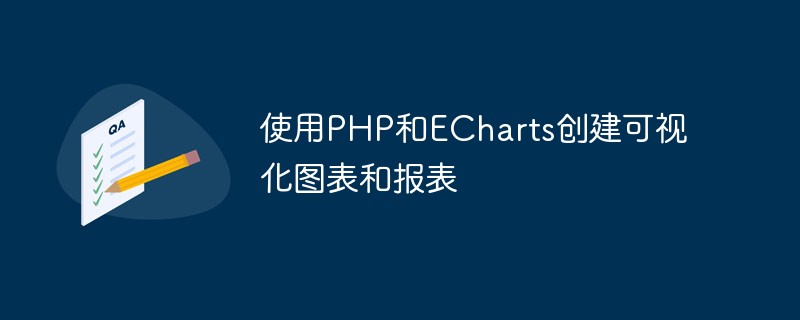 使用PHP和ECharts创建可视化图表和报表May 10, 2023 pm 10:21 PM
使用PHP和ECharts创建可视化图表和报表May 10, 2023 pm 10:21 PM随着大数据时代的来临,数据可视化成为企业决策的重要工具。千奇百怪的数据可视化工具层出不穷,其中ECharts以其强大的功能和良好的用户体验受到了广泛的关注和应用。而PHP作为一种主流的服务器端语言,也提供了丰富的数据处理和图表展示功能。本文将介绍如何使用PHP和ECharts创建可视化图表和报表。ECharts简介ECharts是一个开源的可视化图表库,它由
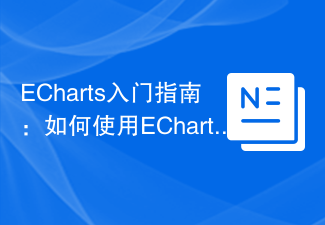 ECharts入门指南:如何使用EChartsDec 17, 2023 am 09:26 AM
ECharts入门指南:如何使用EChartsDec 17, 2023 am 09:26 AMECharts入门指南:如何使用ECharts,需要具体代码示例ECharts是一款基于JavaScript的数据可视化库,通过使用ECharts,用户可以轻松地展示各种各样的图表,如折线图、柱状图、饼图等等。本文将为您介绍如何使用ECharts,并提供详细的代码示例。安装ECharts要使用ECharts,您首先需要安装它。您可以从ECharts官网htt
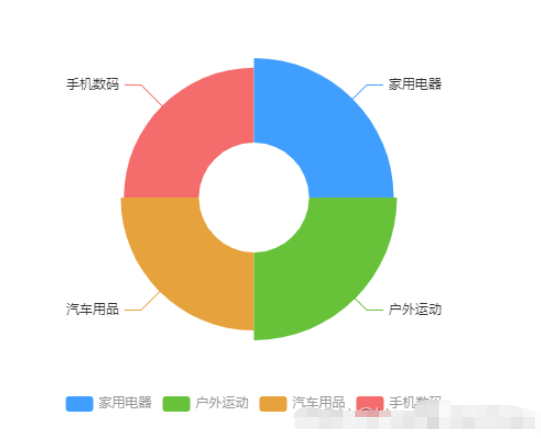 vue3怎么封装ECharts组件May 20, 2023 pm 03:22 PM
vue3怎么封装ECharts组件May 20, 2023 pm 03:22 PM一、前言前端开发需要经常使用ECharts图表渲染数据信息,在一个项目中我们经常需要使用多个图表,选择封装ECharts组件复用的方式可以减少代码量,增加开发效率。二、封装ECharts组件为什么要封装组件避免重复的工作量,提升复用性使代码逻辑更加清晰,方便项目的后期维护封装组件可以让使用者不去关心组件的内部实现以及原理,能够使一个团队更好的有层次的去运行封装的ECharts组件实现了以下的功能:使用组件传递ECharts中的option属性手动/自动设置chart尺寸chart自适应宽高动态展
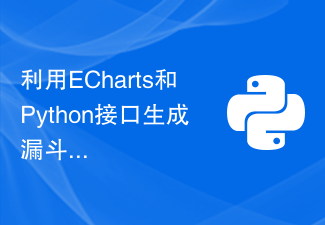 利用ECharts和Python接口生成漏斗图的步骤Dec 17, 2023 am 10:08 AM
利用ECharts和Python接口生成漏斗图的步骤Dec 17, 2023 am 10:08 AM利用ECharts和Python接口生成漏斗图的步骤,需要具体代码示例漏斗图是一种常用的数据可视化工具,可以用于展示数据在不同阶段之间的变化情况。利用ECharts和Python接口,我们可以轻松地生成漂亮的漏斗图。下面,将按照以下步骤介绍如何实现漏斗图的生成,并给出具体的代码示例。步骤一:安装ECharts和Python接口首先,我们需要安装ECharts
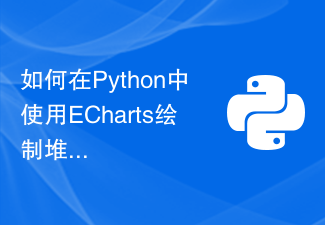 如何在Python中使用ECharts绘制堆叠柱状图Dec 17, 2023 am 09:48 AM
如何在Python中使用ECharts绘制堆叠柱状图Dec 17, 2023 am 09:48 AM在数据可视化领域,堆叠柱状图是一种常见的可视化方式。它将多个数据系列绘制成一个条形,每个条形由多个子项组成,每个子项对应一个数据系列,在同一坐标系下进行展示。这种图表可以用于比较不同类别或数据系列的总大小、每个类别或数据系列的组成比例等。在Python中,我们可以使用ECharts库来绘制堆叠柱状图,而且该库具有丰富的可定制性和交互性。一、安装和导入ECha
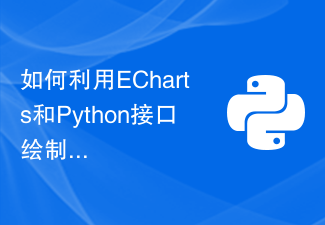 如何利用ECharts和Python接口绘制箱线图Dec 17, 2023 am 10:03 AM
如何利用ECharts和Python接口绘制箱线图Dec 17, 2023 am 10:03 AM如何利用ECharts和Python接口绘制箱线图,需要具体代码示例引言:箱线图(Boxplot)是统计学中常用的一种可视化方法,用于显示实数型数据的分布情况,通过绘制数据的五数概括(最小值、下四分位数、中位数、上四分位数和最大值)以及异常值,可以直观地了解数据的偏态、离散程度和异常值情况。本文将介绍如何利用ECharts和Python接口来绘制箱线图,并
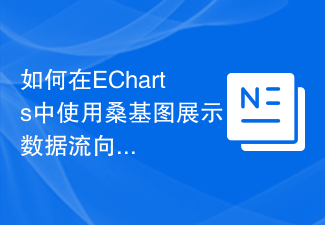 如何在ECharts中使用桑基图展示数据流向Dec 17, 2023 am 09:38 AM
如何在ECharts中使用桑基图展示数据流向Dec 17, 2023 am 09:38 AM如何在ECharts中使用桑基图展示数据流向引言:数据可视化是数据分析中的重要环节,能够将复杂的数据通过图表等方式直观地展示出来。ECharts是一个功能强大的数据可视化库,支持多种图表类型,其中桑基图(SankeyDiagram)能够非常直观地展示数据的流向关系。本文将介绍如何在ECharts中使用桑基图展示数据流向,并提供具体的代码示例。引入EChar


Hot AI Tools

Undresser.AI Undress
AI-powered app for creating realistic nude photos

AI Clothes Remover
Online AI tool for removing clothes from photos.

Undress AI Tool
Undress images for free

Clothoff.io
AI clothes remover

AI Hentai Generator
Generate AI Hentai for free.

Hot Article

Hot Tools

Dreamweaver Mac version
Visual web development tools

VSCode Windows 64-bit Download
A free and powerful IDE editor launched by Microsoft

MinGW - Minimalist GNU for Windows
This project is in the process of being migrated to osdn.net/projects/mingw, you can continue to follow us there. MinGW: A native Windows port of the GNU Compiler Collection (GCC), freely distributable import libraries and header files for building native Windows applications; includes extensions to the MSVC runtime to support C99 functionality. All MinGW software can run on 64-bit Windows platforms.

PhpStorm Mac version
The latest (2018.2.1) professional PHP integrated development tool

SAP NetWeaver Server Adapter for Eclipse
Integrate Eclipse with SAP NetWeaver application server.





